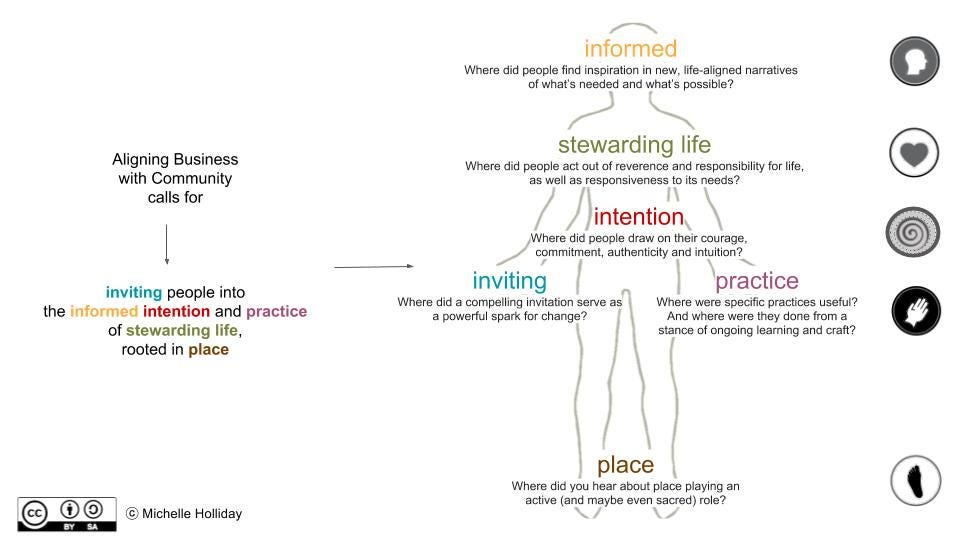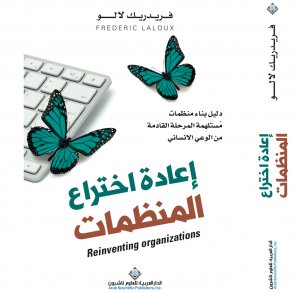By Michelle Holliday and originally published on Medium
How many conferences have you been to that were loaded with dynamic speakers expounding on their latest success stories? This is what sells tickets. And so it should — we all love an inspiring story. More than that, we want to learn from other people’s experience. We want to know what works.
The problem arises when all we take away is a simple story of a heroic individual who takes a single action that changes everything for the better, as if all we have to do is copy and paste this isolated “best practice” into our own contexts and we’ll have similar results.
As appealing as this is, we know it’s never really that simple.
- It usually takes more than action to generate and support change. It can also require things like intention, clarity of purpose, relationship, and more. In focusing on practices alone, we leave on the table much of the richest learning about what actually works.
- In these times, more change is needed than best practices alone can deliver. If humanity is going to make it through the looming crises we face, we don’t just need to do the same old things, only better. It’s also not enough to do new, better things. We need to reconnect with what matters. We need to rediscover our place in the whole of life. We need to redefine success and embrace the fuller context of what can get us there. Ultimately, we need to find the collective will to cultivate life’s ability to thrive — to create the conditions for “thrivability” — in every sphere of society.
A Deeper Level of Listening
When I recently co-chaired a conference around the local economy movement, our response to this broad need was not to eliminate the dynamic speakers and their stories of success but to offer participants guidelines for a deeper level of listening.
Our premise was that to “align business with community” (our shorthand way of describing the power and potential of local economies), the following six elements or patterns are required:
(1) invitation into the (2) informed (3) intention (4) and practice (5) of stewarding life, (6) rooted in place.
These were the things we invited people to listen for.
Why those things?
- The outgoing worldview has been dominated by persuasion and even coercion, “driving” and “incentivizing” change. What we now know is that living systems — including teams and organizations — demonstrate the greatest wisdom and generativity when they are self-organizing. With this knowledge, invitation becomes the most appropriate and effective method of engaging people.
- If you’re going to steward life, you need to know what’s involved. What exactly does it take to enable life to thrive? Why does it matter? What’s at stake? It helps to be informed by new, emergent narratives and frameworks.
- You also have to commit to acting on that information, holding the explicit intention to enable thriving for ourselves and for the whole community of life. As a society, we’ve generally lost that scope of intention and, as a result, we’re getting something decidedly less than thriving.
- Cultivating thrivability is not a discrete item on your to-do list; it’s an ongoing life practice, as well as a collection of best practices. It calls for constant learning and adaptation, embracing the continuous individual and collective practice of assessing our designs and of sensing and serving life’s ongoing transformation, with curiosity, compassion and craft.
- Humanity’s best and only hope is to commit to stewarding life, with a sense of reverence and responsibility. Everything comes down to our ability to acknowledge and celebrate the precious gift of aliveness, source of our kinship with all existence.
- It is through a sense of place — of being rooted in and nourished by place, of weaving our own story together with the stories of the places we belong to — that we connect with the generative dimension of life most directly.
On that basis, here’s what we invited people to listen for within the line-up of inspiring speaker stories (depicted also in the handout featured below):
- Inviting: Where did a compelling invitation serve as a powerful spark for change?
- Informed: Where did people find inspiration in new, life-aligned narratives of what’s needed and what’s possible?
- Intention: Where did people draw on their courage, commitment, authenticity and intuition?
- Practice: Where were specific practices useful? And where were they done from a stance of ongoing learning and craft?
- Stewarding life: Where did people act out of reverence and responsibility for life, as well as responsiveness to its needs?
- Rooted in place: Where did you hear about place playing an active (and maybe even sacred) role?

On the last afternoon of the conference, people were split into groups, each assigned one of the elements/questions to discuss (for example, “intention”), with the following prompts:
Where did you hear this particular pattern in the stories that were shared?
And what does it suggest about the potential of the local economy movement at this time? About what’s needed and what’s next?
After the small-group discussions, we heard from each group. It was powerful, especially as a way to reveal insights beyond best practices and to open people’s minds to what more may be needed — and possible. It also helped people feel a sense of coherence and community in what otherwise may have been a fragmented experience.
These patterns and questions are likely to be relevant for any context, particularly since every sphere of society needs to align more explicitly with life’s ability to thrive.
If you decide to use this set of questions or something like them at your next conference, please share what you learn. This is important work. As Margaret Mead said,
“For the human species to evolve, the conversation must deepen.”
Republished by permission of the author
Featured Image/graphic link added by Enlivening Edge Magazine. Photo by Javier Graterol on Unsplash




